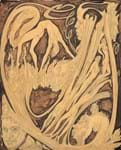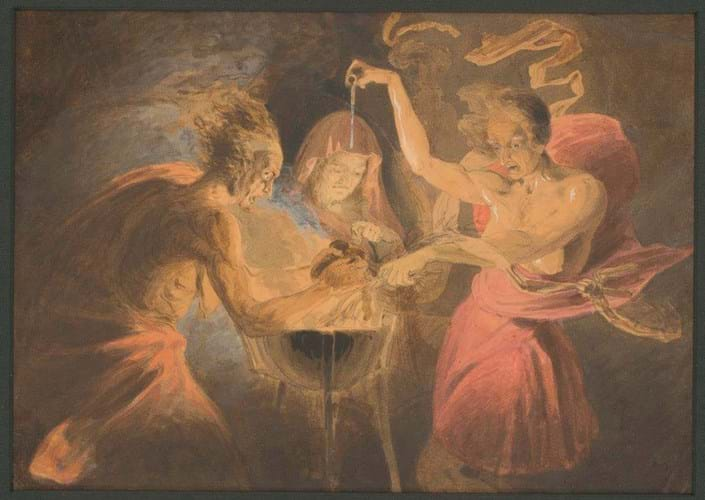
Though he began his current exhibition as a project to coincide with Halloween, New York drawings dealer Christopher Bishop argues that The Magic of the Draughtsman: Images of the Occult suits this rather bonkers year as a whole.
“In a time of crisis, people will revert to astrology and ways of thinking that usually go under the radar,” he tells ATG, tying together one of the ideas of German art historian Aby Warburg (1866-1929), whose writings helped inspire the show, as well as anecdotal evidence that the pandemic has sparked a growing enthusiasm for star charts and mysticism.
In July, British astrology site Astrolutely reported an increase in traffic of 20% and in September, a Canadian paper reported that the industry was undergoing unprecedented popularity. One Canadian astrologer said that her client base had increased by 50%, while her online classes had sold out for the first time ever.
New age/old age
While these practices might fall under the category of ‘new age’, Bishop’s exhibition proves there is nothing new when it comes to fascinations with the mystical and occult.
His selection of nearly 20 drawings encompasses works from the 16th to early 20th centuries. Subjects include the Zodiac, supernatural scenes from Shakespeare, the bible and mythology.
Some are simply illustrations of magical moments, such as a c.1820 drawing by John Dowman (175-1824) of the witches from Macbeth, priced at $18,500.
In other offerings, Bishop embraces the idea of ‘a second’ art history: one which understands artworks as quasi-magical objects in their own right, rather than simply the result of technical and intellectual endeavour.
“Even during the Renaissance, which is often seen as an age of proto-enlightenment, works of art could be understood as being able to protect or promote interests in different ways,” he says.
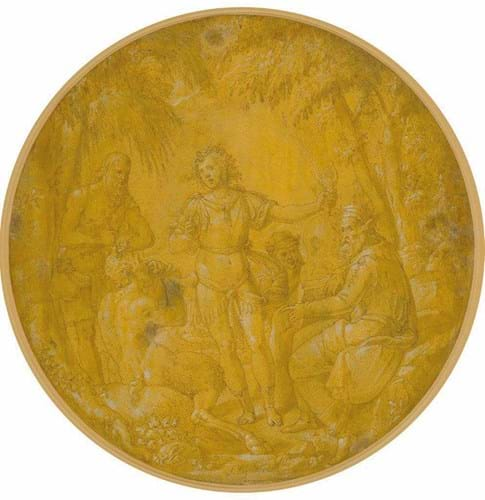
Jacopo Ligozzi, 'The Contest of Apollo and Pan', 1590, pen and black ink with grey washes on prepared ochre paper, heightened in white, 33cm (diameter), priced $215,000 from Christopher Bishop.
Take, for example, a scene of the music competition between Apollo and Pan by Italian artist Jacopo Ligozzi (1547-1627), which Bishop describes as “essentially a big talisman”.
The artist, who was often commissioned by the Medici family, was interested in the power of images as a conduit of prosperity, and this drawing may have been seen as having the power to ward off evil.
The pen and ink on ochre paper is on public display in New York for the first time and is offered for $215,000.
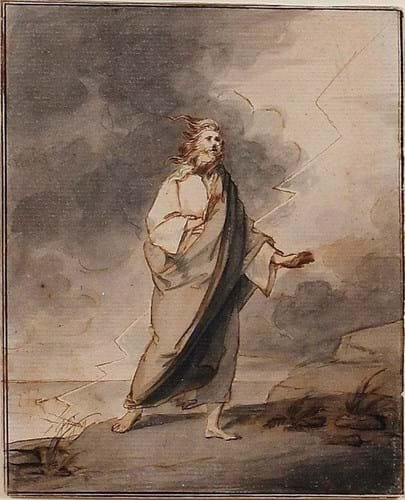
John Trumbull, 'Prospero', 1784, Pen and brown ink with brown and grey washes, 15 x 12cm, $19,000 from Christopher Bishop.
Whereas media such as paintings or sculpture are usually made for public consumption, Bishop says “drawings are a good way to get away with subjects that are more private or are close to the line between the licit or illicit. John Trumbo’s drawing of Prospero may have been made for the artist himself and show how the artist relates to the magician. This sort of exploration is more possible in drawings than in paintings.”
The pen and brown ink with washes by the British-American draughtsman (1756-1843) shows the hero of Shakespeare’s The Tempest, known for his use of otherworldly powers, and is available for $19,000.
Biblical theme
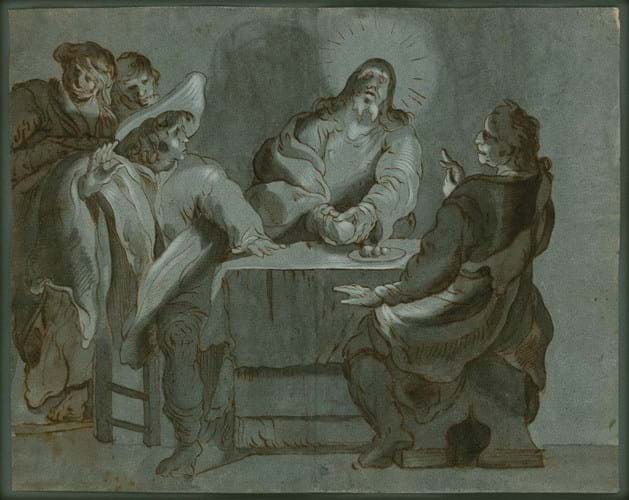
Attributed to Anna Hoffman, 'Supper at Emmaus', c.1642, pen and black ink with grey washes heightened with white on prepared blue paper, 33 x 42cm, $14,500 from Christopher Bishop.
It is not all black magic on show. A biblical scene attributed to Swiss artist Anna Hoffman (born c.1622), offered for $14,500, shows Christ revealing himself as the Messiah to two surprised disciples, while a scene by a follower of Rembrandt shows an angel saving Lot and his family in the Old Testament.
“Interest in the show is high, but the environment in New York is not what would have been before,” Bishop says. “The images translate well online though, and we are open by appointment and the show is available on Artsy.”
Though it was planned to close on December 18, the exhibition is now likely to remain open into February to coincide with Master Drawings Week New York.


